
American mink. Photo by Tom Koerner, USFWS.


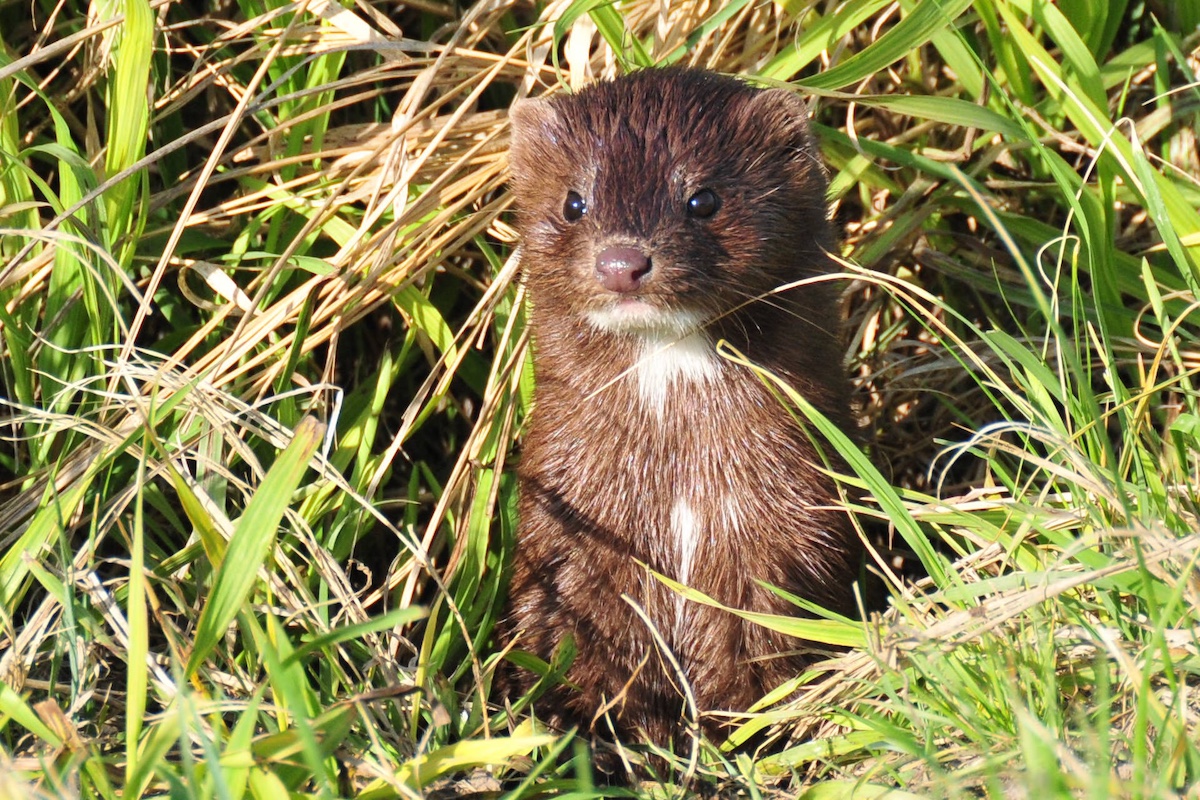
American mink. Photo by Tom Koerner, USFWS.
You catch a flash of movement along a stretch of grassy lakeshore. What was that? With no time to study the object, all you know is that it was a streamlined, brown-bodied mammal dashing on short legs for cover. Was it big enough to be a river otter? Was it small enough to have been an American mink or even smaller and one of the two species of weasels present in Illinois? Four similar mammals but which one was it? Perhaps a little background information on these members of the weasel family will help you process the fleeting information you have so you can determine which mammal you saw.
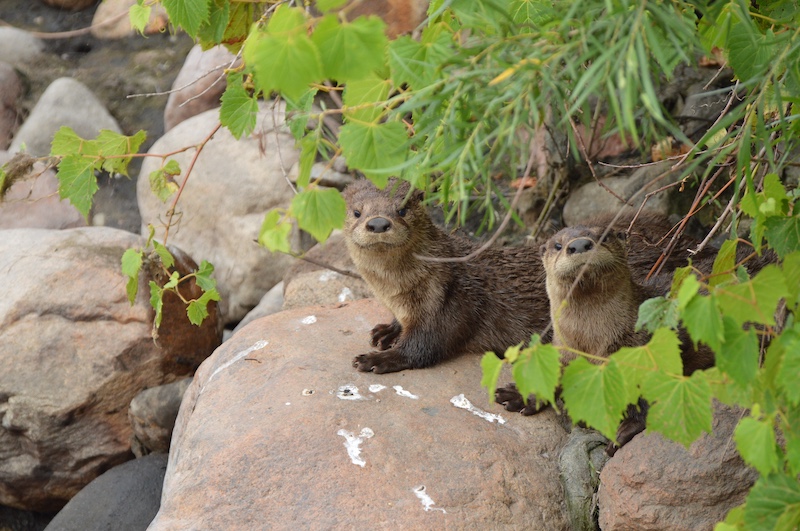
Before we delve into their differences, what characteristics do least weasels (Mustela nivalis), long-tailed weasels (Mustela frenata), American mink (Neovision vison) and river otters (Lontra canadensis) share?
Here are a few questions that may help you identify the mammal you got a fleeting glimpse of.
Least weasels are found only in the northern half of the state but are rarely seen, even though they may be common in the area. Long-tailed weasels are fairly common throughout Illinois. American mink are common and found in all 102 Illinois counties, but are most abundant in northeastern Illinois, the counties bordering the lower Mississippi River and in the southern-third of the state. Rare in the state until the late 1990s when they were reintroduced, river otters are now found throughout the state with highest concentrations along the Mississippi and Illinois rivers and their backwater lakes.
Preferring more open habitats, least weasels can be found in meadows, grasslands or river bottoms. Forests, woodlands, thickets and brushy fencerows are the preferred habitats of the long-tailed weasel and, because they are more tolerant of people, they may live around farmsteads and the edges of suburbs. American mink live on the shores of rivers, streams, lakes, ponds and marshes while river otters occur in rivers, streams and lakes near timbered and wetland habitats.
Size is often a telling factor to determine which of the four mustelids you saw. The tiniest of the four is the least weasel, which maxes out at 10 inches in length and weighs in at 3 ounces—the same as a regular deck of 52 playing cards. The long-tailed weasel is slightly larger, at 11 to 17 inches long, and weighs between 3 to 10 ounces. Ranging from 17¾ to 27½ inches long, American minks weigh between 2 to 3 pounds. And then there is the heftiest of the four—the 10- to 30-pound river otter with a nose-to-tail tip length between 34 and 53 inches.
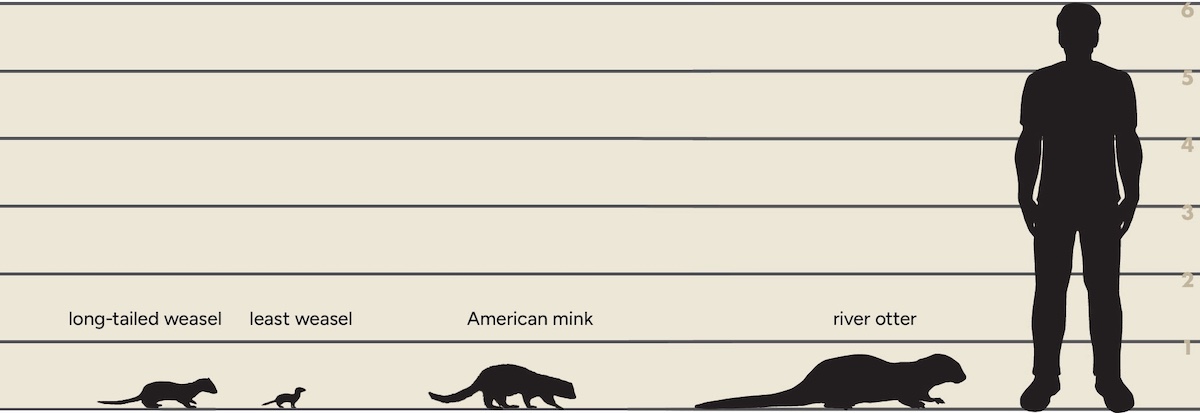
When it comes to weasels, coat color will depend on the season. The summer coats of the least and long-tailed weasel are reddish-brown and they have a yellowish-white throat, chest and underside. After the fall molt their coats will be a lighter color, and those in northern Illinois may be totally white. Regardless of the season, a black-tipped tail can be used to identify the long-tailed weasel from the least weasel.
A white chin patch and black-tipped tail complete the coat of the dark-brown American mink. The annual molts change the fur from the dense winter coat to a sparser fur in the summer.
River otters are dark brown to nearly black with a lighter colored underside.
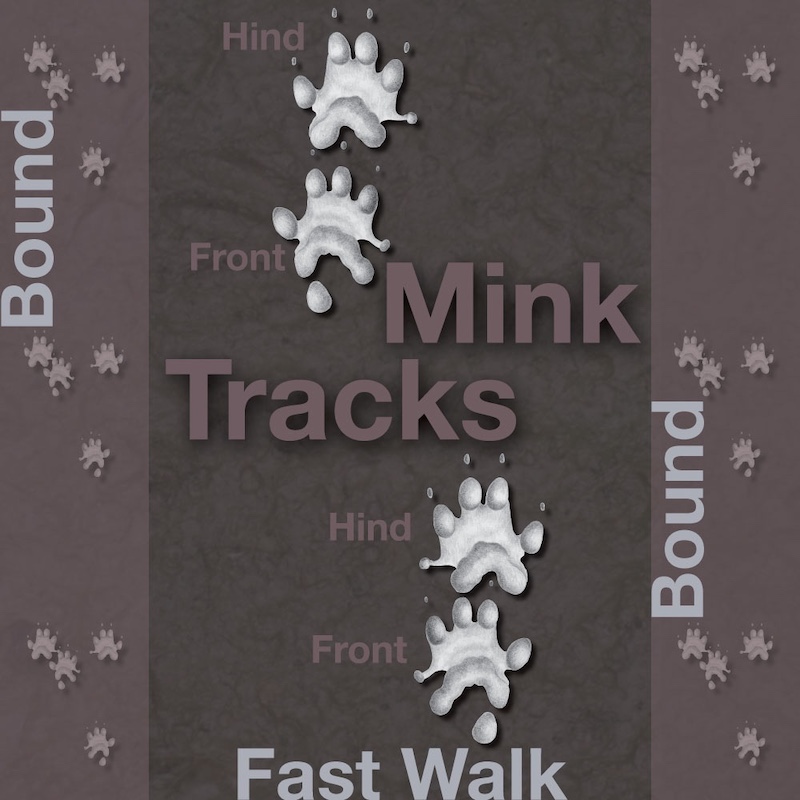
Track lengths range from only ½ to ⅘ inches long for the least weasel to 1 to 1⅘ inches long for the long-tailed weasel, 1.3 to 2 inches long for the mink and just under 4 inches in length for the river otter. The appearance of webbing and claws on the print confirms you have found evidence that a river otter passed by. Look for additional track identification tips for all four species under the “Identify Wildlife” link at Wildlife Illinois.
There’s no consistency among these four mammals in the time of day they are active. Weasels are active throughout the day while river otters cover the dawn and dusk hours, and American minks take the night shift. Given weather conditions and food supply, you may see these mammals outside of times when they are normally, or generally, active.
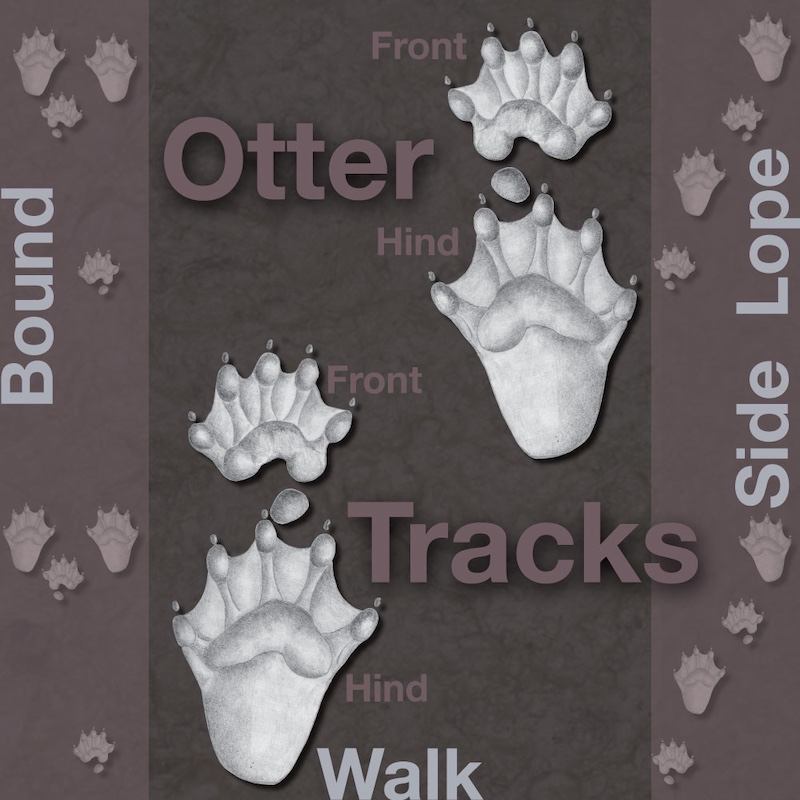
Behavior can provide a critical identification tip.
Was it in a tree? This won’t help narrow your choices because the least and long-tailed weasels, and American mink, are all good at climbing trees. But it is a cool fact and may show up on a trivia quiz someday.
Was it swimming? Most of the members of the weasel family that occur in Illinois can be found in water. Long-tailed weasels are strong swimmers. American minks can swim underwater for more than 100 feet and can dive to a depth of 16 feet. Another exceptional swimmer, the river otter may stay submerged for up to 4 minutes, traveling a quarter mile underwater during that brief moment in time.
These basic questions can be applied to most situations when you have an UMO, or Unidentified Mammalian Organism. Make some notations on the location, habitat type, size, color, distinguishing marks, tracks (and scat) and activities within the habitat (climbing, swimming, etc.) and you should be able to confidently identify the animal. And if you need to reference a source to confirm your guess, head to Wildlife Illinois.
Kathy Andrews Wright retired from the Illinois Department of Natural Resources where she was editor of OutdoorIllinois magazine. She is currently the editor of OutdoorIllinois Journal.
Submit a question for the author